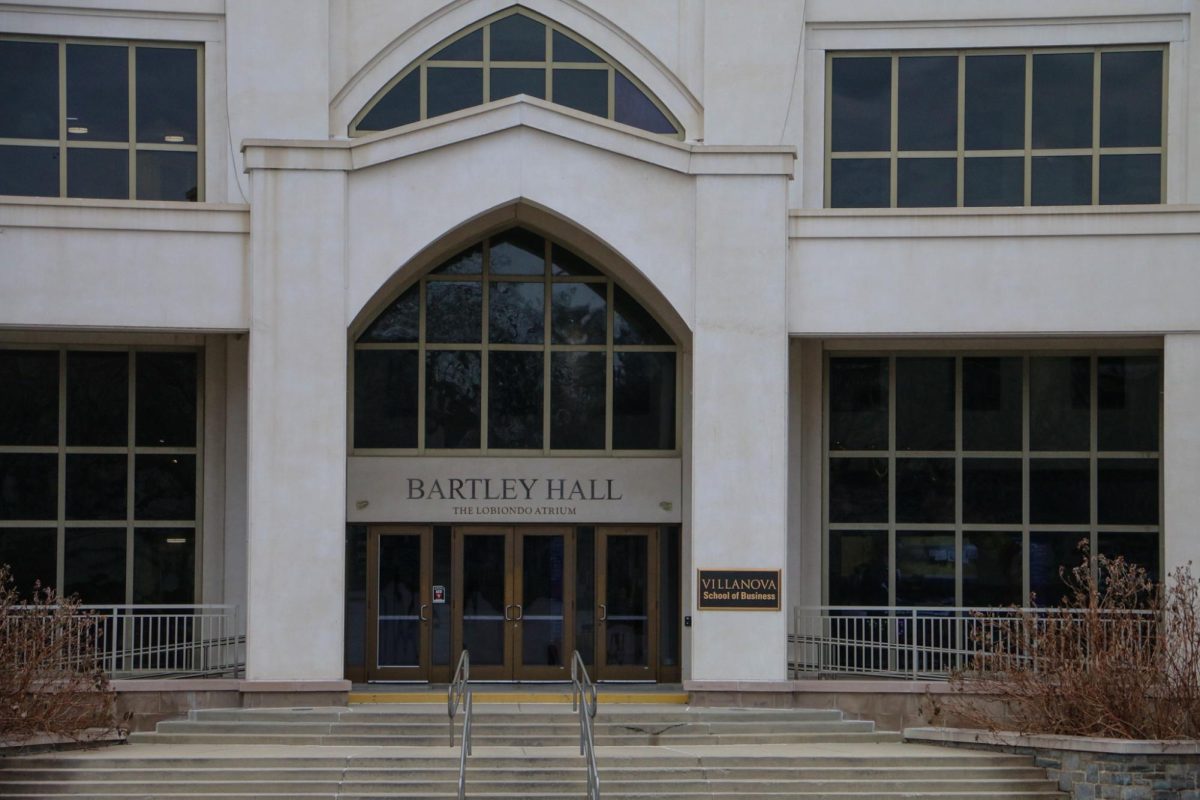With election day just six days away, many Villanovans are preparing to cast their ballots in the 2024 general election. This year, registered student voters living on campus will have the new and exciting opportunity to vote at the Villanova Mullen Center for the Performing Arts, which stands at the intersection of Lancaster Avenue and Ithan Avenue.
While many first-time voters at Villanova are eager to cast their ballots on Nov. 5, some may feel a general sense of uncertainty. What will election day look like? Will there be a wait to enter the polls? How does the voting process actually work?
Hally Ammons, Assistant Director of Government and Community Relations at Villanova, addressed these concerns, explaining how election day will unfold for on-campus voters.
Before entering the Mullen Center, voters will likely encounter individuals or groups near the front of the building. These groups may include Villanova groups, like Let’s Vote ‘Nova, as well as external groups, such as volunteers for political parties or members of campaigns. Ammons clarified that while these groups are permitted to station themselves outside the polling place, they must remain 10 feet from the entrance of the building. She also said that while technically allowed to be in front of the Mullen Center, no voters are required to engage with these external groups.
“You do not have to take anything these campaign workers want to give you, and you don’t have to engage with them,” she said. “You can simply walk into the building, vote, and leave.”
Once arriving at the Mullen Center, Ammons describes what she expects to be a typical voting experience.
“When voters arrive, they will come through the front doors of the Mullen Center, and the two precincts will be set up in the lobby,” she said. “There will likely be tables set up in the lobby where voters can check in with a poll worker. They will give their name and show their ID– this is something that’s really important.”
Ammons emphasized that on-campus voters bring a valid form of identification to the Mullen Center.
“Everyone will need to show an ID,” she said. “A student’s Wildcard, their school ID, is sufficient. You can also use your Pennsylvania driver’s license if you have one, or your passport.”
After checking in, the poll workers will direct voters to either Precinct 1 or Precinct 2.
“You will go to your precinct, you will check in, the poll workers will hand you your ballot, and they will direct you to a table to fill out your ballot,” Ammons said.
The paper ballots will resemble Scantron sheets used for standardized tests, and voters will fill them out behind privacy screens to ensure confidentiality. Once completed, voters will scan their ballots using a machine that Ammons compared to a copier, which will confirm that their vote has been cast.
Voters who request a touchscreen voting system for accessibility purposes will be able to utilize available equipment to cast their ballot.
“After you cast your ballot, that’s pretty much it,” Ammons said. “You can get a sticker and leave after your ballot has been confirmed.”
In terms of wait times, Ammons hopes they will be minimal, but advises that voters to plan accordingly.
“The way that the polls work, lines usually move very quickly,” she said. “With that being said, part of making a plan to vote is carving out time in your day just in case there are lines. So if you’re planning to vote that day, make sure you’re not going five minutes before your class starts.”
To minimize wait times, on-campus voters can ensure that they come prepared with a valid ID, as well as take the time to review a sample ballot before election day.
“You can view a sample ballot on the county’s website so you have an idea of what the ballot looks like and how you’ll fill it out– give some thought to how you’re going to vote before you arrive,” she said. “That way, when you receive your ballot, you are not presented with information you haven’t seen before.”
In her view, Ammons predicts that election day at the Mullen Center will be a generally smooth and positive experience.
“People want to see you, voters,” she said. “I have been volunteering at polls for about ten years now, and in that time, I have had almost zero negative interactions. Definitely come into the day with a positive mindset.”
For more information on voting in Pennsylvania, visit vote.pa.gov.
For Delaware County-specific voting information and to view a sample ballot, visit delcopa.gov/vote.
For more information and answers to frequently asked questions specific to voting at Villanova University, students can visit Let’s Vote ‘Nova’s website at https://www1.villanova.edu/university/student-life/student-involvement/vote.html.








